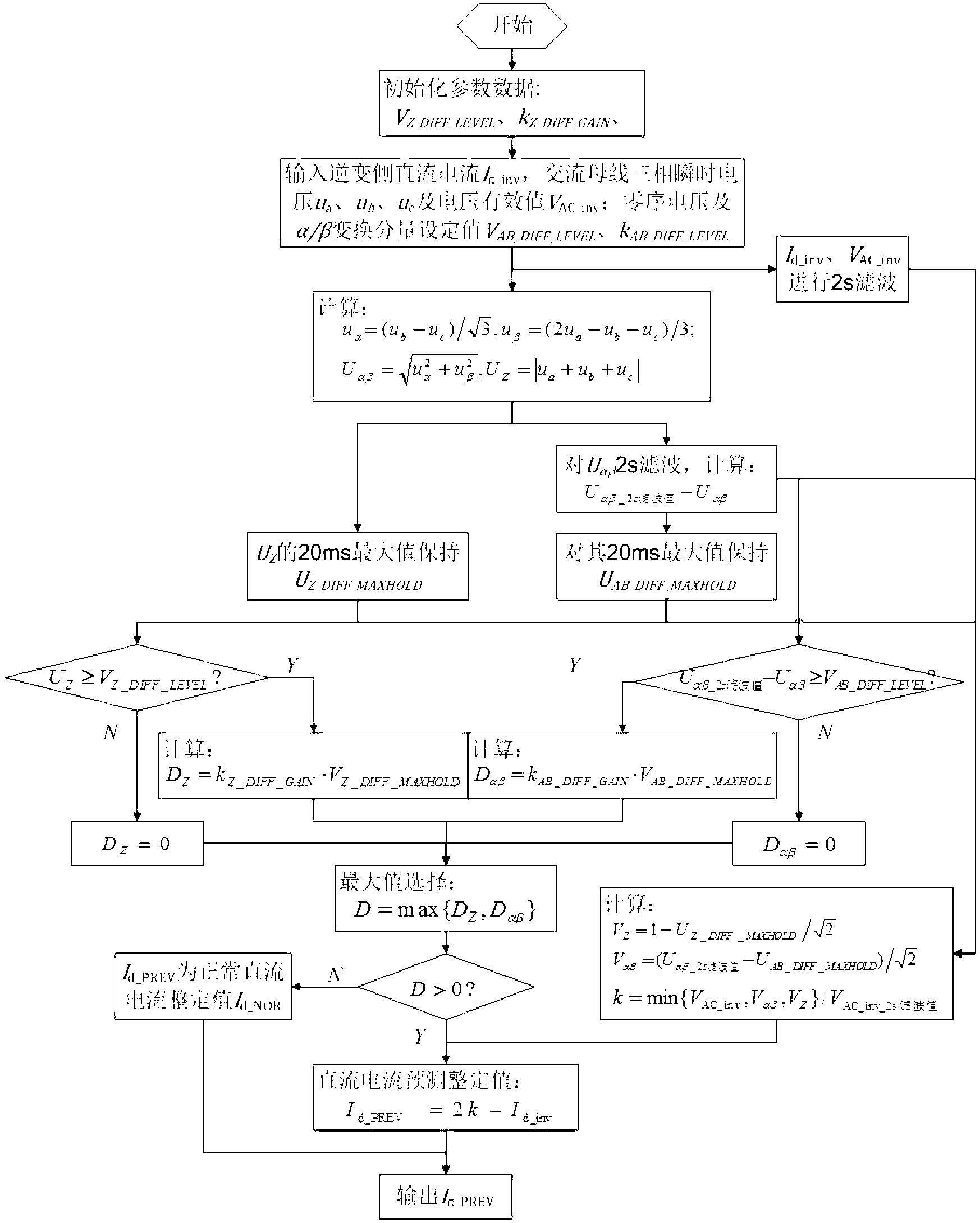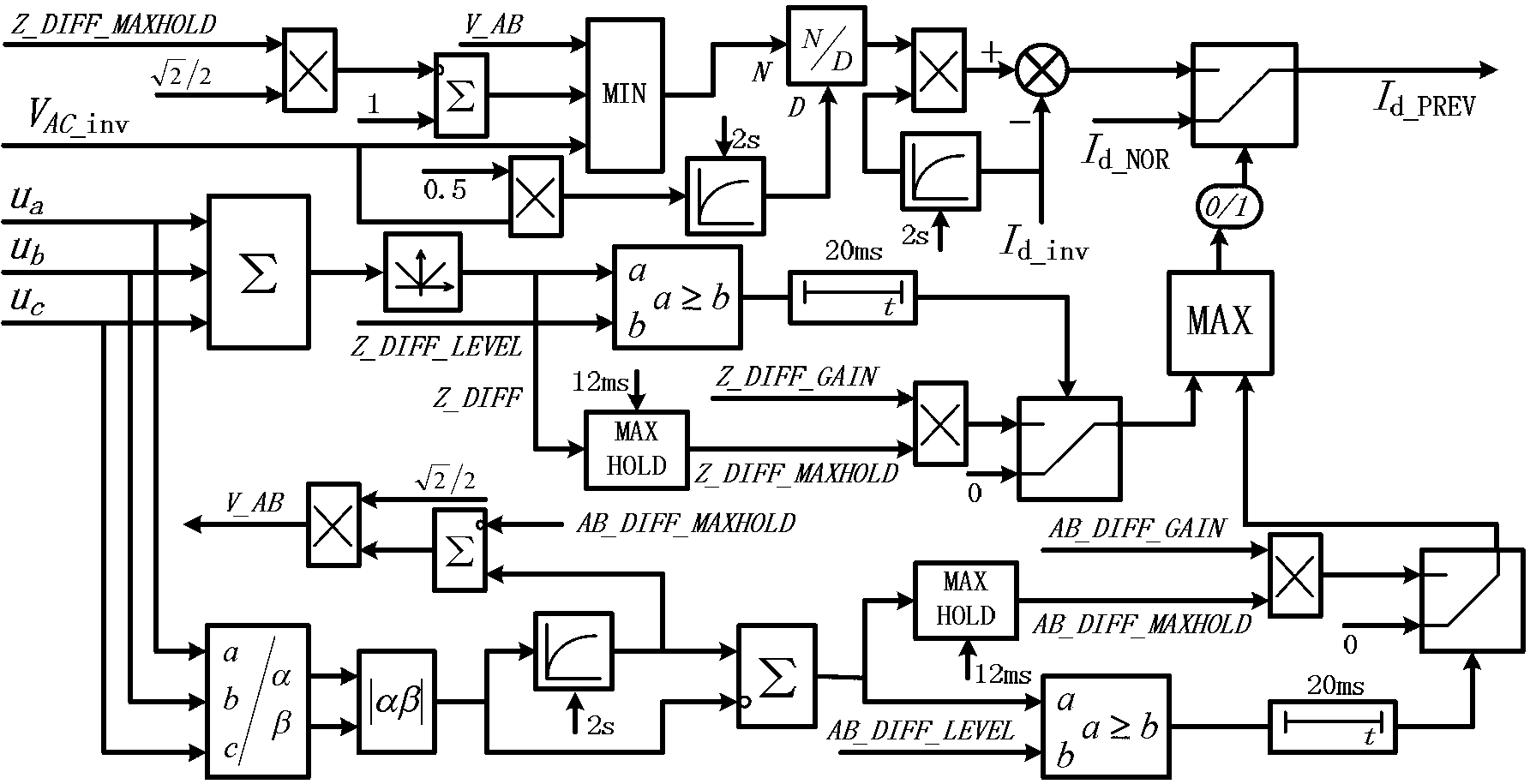Direct current predicting and setting method for inhibiting commutation failure
A commutation failure, DC current technology, applied in the direction of DC network circuit devices, irreversible DC power input to AC power output, electrical components, etc. Reduce the turn-off angle and other problems, to achieve the effect of enhancing control, reducing the probability of commutation failure, and reducing the trigger delay angle
- Summary
- Abstract
- Description
- Claims
- Application Information
AI Technical Summary
Problems solved by technology
Method used
Image
Examples
Embodiment Construction
[0027] Below in conjunction with accompanying drawing and specific embodiment, further illustrate the present invention, should be understood that these embodiments are only for illustrating the present invention and are not intended to limit the scope of the present invention, after having read the present invention, those skilled in the art will understand various aspects of the present invention Modifications in equivalent forms all fall within the scope defined by the appended claims of this application.
[0028] Below in conjunction with accompanying drawing, the technical scheme of invention is described in detail:
[0029] The commutation failure of the DC transmission system (mainly the commutation failure of the inverter) seriously threatens the safe and stable operation of the DC transmission system. There have been many studies on its predictive control technology, and the commutation failure predictive control module can better solve the problem. In order to increa...
PUM
 Login to View More
Login to View More Abstract
Description
Claims
Application Information
 Login to View More
Login to View More - R&D Engineer
- R&D Manager
- IP Professional
- Industry Leading Data Capabilities
- Powerful AI technology
- Patent DNA Extraction
Browse by: Latest US Patents, China's latest patents, Technical Efficacy Thesaurus, Application Domain, Technology Topic, Popular Technical Reports.
© 2024 PatSnap. All rights reserved.Legal|Privacy policy|Modern Slavery Act Transparency Statement|Sitemap|About US| Contact US: help@patsnap.com










